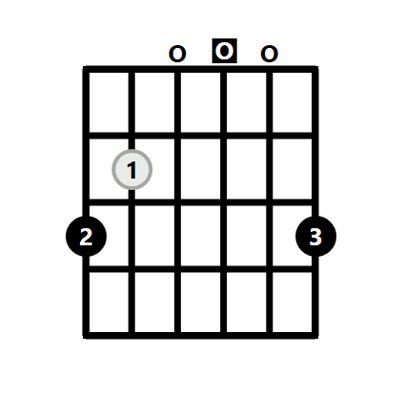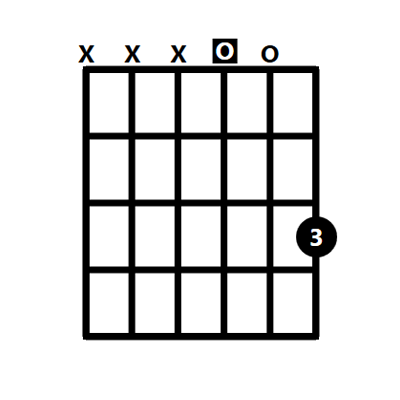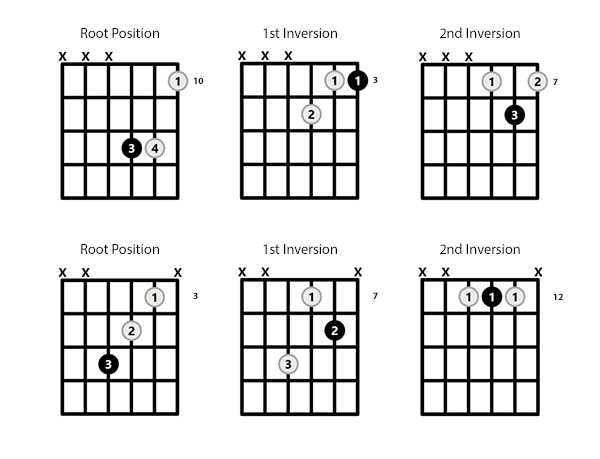One of the most widely used guitar chords is undoubtedly the G Major chord. One of the first chords that the majority of guitarists learn is the open G chord. Since all six guitar strings are used in the open chord variant of G, the chord feels and sounds "full."
A lot of Pop, Rock, and Folk songs have been composed in the key of G, which is also a very popular key. Since most of the chords in the key of G are also very popular open chords (D, Em, C, Am), it should come as no surprise that guitarists favor this key.
A Quick Guide to G Chord Theory
- The notes G, B, and D make up the chord in the key of G.
- The first (root), third, and fifth notes of the G Major scale are played to create the chord in G major.
- The G chord, like all Major chords, has the intervals Major 3rd, Minor 3rd, and Perfect 4th (counting from the root note) (back to the root note).
- In the key of G Major, the G chord comes first. The G, Am, Bm, C, D, Em, and F# reduced chords are the seven chords in the key of G Major.
10 Techniques For Playing The G Major Chord
Here are some chord diagrams for G if that's the only reason you came to this page.
Common G chord form (Open G Chord)
The open position is the most typical technique to play the G chord. One of the most popular chord shapes and one of the first ones that the majority of guitarists learn is this one.
The above shape makes use of the open strings and all four fingers. The G chord is typically played in this manner. The next illustration illustrates a very well-liked version that just requires three fingers.
Remember that both of the aforementioned open G chord shapes are acceptable ways to play the chord. The notes G, B, and D are present in both chords. The first shape adds an additional D note to the chord (on the second string), whereas the second shape adds an additional B note to the chord (on the 2nd string).
Simple G chord
The simplest G chord is just a scaled-down version of the open G chord (the three-finger version). It simply only one finger and the first three guitar strings (as well as open strings). When learning the guitar, these small chords might be a fantastic place to start as they enable you to play chord tunes without knowing full (and sometimes difficult shapes).
How to Play the Chord in G Major (Step by Step)
- Put your second finger on the sixth string's third fret.
- Put your first finger on the fifth string's second fret.
- Put your third finger on the second string's third fret.
- Put your fourth finger on the first string's third fret.
- Use all six strings to strum.
The open G Major chord form is demonstrated in detail in the instructions above. When you think you're interpreting the form incorrectly, these guidelines can actually be very beneficial. You may ensure you're playing the chord correctly by carefully following the E chord guidelines.
G-string Barre Chord Shapes
Using a root 6 barre chord form and beginning on the sixth fret, or a root 5 barre chord Major shape and beginning on the tenth fret, the G chord can be played as a barre chord:
Triads in G major
The open position G and the barre chord forms are the most common shapes used when playing the G chord. To explore the interesting and nuanced variations that exist across the fretboard, studying the rigorous root position and inverted triads is a terrific idea. There are three different ways to vocal the E Major triad:
- Root Position for the G Major Triad: G, B, and D
- B, D, G Major Triad, 1st Inversion
- Second Inversion of the G Major Triad (D, G, B)
These six arrangements of the G Major triad are available (including inversions).
Which Keys Contain the G chord?
The following keys include the E chord:
- G Major (G, Am, Bm, C, D, Em, F#dim) is a major key.
- D Major (D, Em, F#m, G, A, Bm, C#dim) is the key.
- the C Major key (C, Dm, Em, F, G, Am, Bdim)
- E minor (Em, F#dim, G, Am, Bm, C, D) is a minor key.
- B minor (Bm, C#dim, D, Em, F#m, G, A) is the key.
- the Am minor key (Am, Bdim, C, Dm, Em, F, G)
G Chord Alternatives That Are Still Useful
Alternative ways to play the G Major chord form include the ones below. Though not the most typical G shapes, they are utilized frequently enough to be listed here as intriguing alternatives.
G Chord Replacements
The G add 9 chord, G sus 4 chord, and G sus 2 chord are frequently used in place of the G chord. The G chord can also be used by itself as a replacement for more complex chords, including the G Major 7 chord, the G7 chord, and other extension chords with G as their root note (but not minor chords)!
Which scales are compatible with the G chord?
The most popular and useful scales for soloing or improvising over the G Major chord or for developing melodies for songwriting purposes are:
- G Major pentatonic scale - In any situation, this scale will nearly always sound good over the G Major chord.
- The "default scale" for the G chord is the G Major scale.
- In some situations, the G chord can be accompanied with the G Lydian mode to lend a jazzy flavor.
- Blues in the key of G: This scale is very helpful in a blues setting.
Continue Reading
- G Major key
- G chord page: how major chords function Major scale chord G/B
- G/D scale





